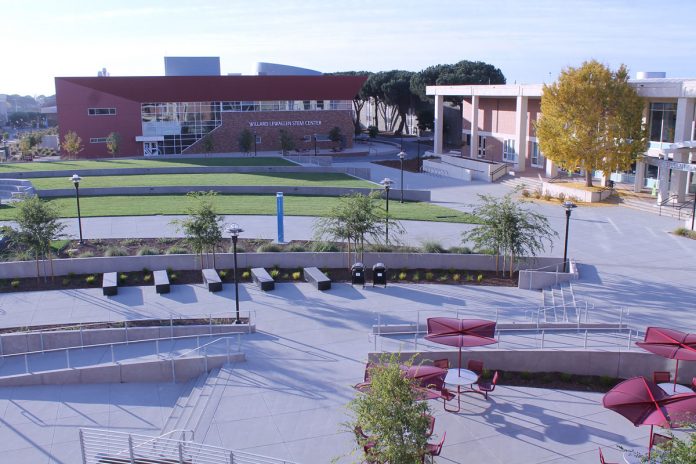SALINAS — Hartnell College has been awarded a $9.5 million grant from the USDA’s National Institute of Food and Agriculture’s inaugural NEXTGEN program.
The official announcement was made during a presentation by the U.S. Secretary of Agriculture Tom Vilsack in Washington, D.C., on June 20.
“This is the largest grant in the history of the college,” said Michele Peregrin, director of grants development and innovation at Hartnell College. “Thanks to a knowledgeable, dedicated team, we submitted a thoughtful, comprehensive proposal to work directly on supporting our students.”
The project, titled “Hartnell College Learning to Lead: Career Pathways Supporting US Leafy Green Production,” will be carried out in partnership with Imperial Valley College, Cal State University Monterey Bay and the University of Arizona, Yuma.
The partner institutions are interconnected through deep educational, economic, agribusiness and cultural ties. The Salinas Valley and the Imperial Valley-Yuma region have complementary agricultural seasons, providing the United States and beyond with year-round leafy greens and fresh-cut vegetables.
“We are honored to be the only community college with a Hispanic-Serving Institution (HSI) designation to be awarded as the lead of the NEXTGEN collaborative grant,” said Shannon Bliss, program director/principal investigator at Hartnell College.
This project aims to advance equity in high-skill agriculture occupations for educationally disadvantaged, low-income and Latinx residents. The four institutions will focus on building and sustaining the future food and agricultural sciences workforce.
Grant projects will magnify existing student support and career development programs for students pursuing four agricultural degree/transfer-track pathways: Agriculture Business Management, Agriculture Food Safety, Agriculture Plant Science and Industrial Automation/Mechatronics.
“With the aid of this NEXTGEN grant, we’re strategically positioned to shape the future generation of agriculture producers and scientists in the Salinas Valley and the Imperial/Yuma region,” said Clint Cowden, dean of academic affairs at Hartnell College. “Our goal extends beyond increasing agricultural productivity and to enhance the safety of our nation’s year-round supply of leafy greens.”
To streamline the educational journey for students, programs at all four institutions will employ a guided pathway approach, ensuring that students receive clear information on how to embark on their educational journeys by eliminating unnecessary coursework and reducing time-to-transfer and degree completion.
The initiative is also designed to bridge the gap between high school/adult school and four-year university degrees with flexible entry and exit options to help students overcome long-term educational and career obstacles while providing comprehensive support to individuals returning to the workforce.
“The power of a robust education, coupled with practical experience and a thriving job sector, is incomparable,” Bliss said. “The NEXTGEN grant allows us to pave a clear path for our students to rewarding agricultural careers, creating a strong talent pipeline to sustain our regions’ pivotal role in national agricultural production.”
During the five years of the grant, Hartnell’s NEXTGEN grant will enroll over 850 eligible students and increase the credential completion rate by 10%, including certificates, associate and bachelor’s degrees. Over half of the grant funds are planned to go directly to students through internship stipends and scholarships.
The project’s goals align with the USDA’s primary NEXTGEN (From Learning to Leading: Cultivating the Next Generation of Diverse Food and Agriculture Professionals) program goal to engage, recruit, retain, train and support students to help build and sustain the next generation of the food and agriculture workforce, including the future USDA workforce.
It will accomplish this by supporting USDA program priorities, including providing student scholarship support, meaningful paid internships, job opportunity matching, and facilitating opportunities through extensive outreach and engagement to promote the processes and pathways leading to training and employment in industry and at USDA.
Hartnell College and the three grant partners are accredited Hispanic Serving Institutions (HSIs) located in two of the nation’s most productive agricultural regions: the 1,000-square-mile Salinas Valley, the 500-square-mile Imperial Valley and the 280-square-mile Yuma County agricultural region.
The Salinas and Imperial valleys are in two of California’s top 10 agriculture-producing counties, which lead the nation in agriculture production. Monterey County (including the Salinas Valley) is ranked fourth at $4.4 billion in agriculture production, while Imperial County (including the Imperial Valley) is ranked ninth at $2.1 billion, according to the California Department of Food and Agriculture.










